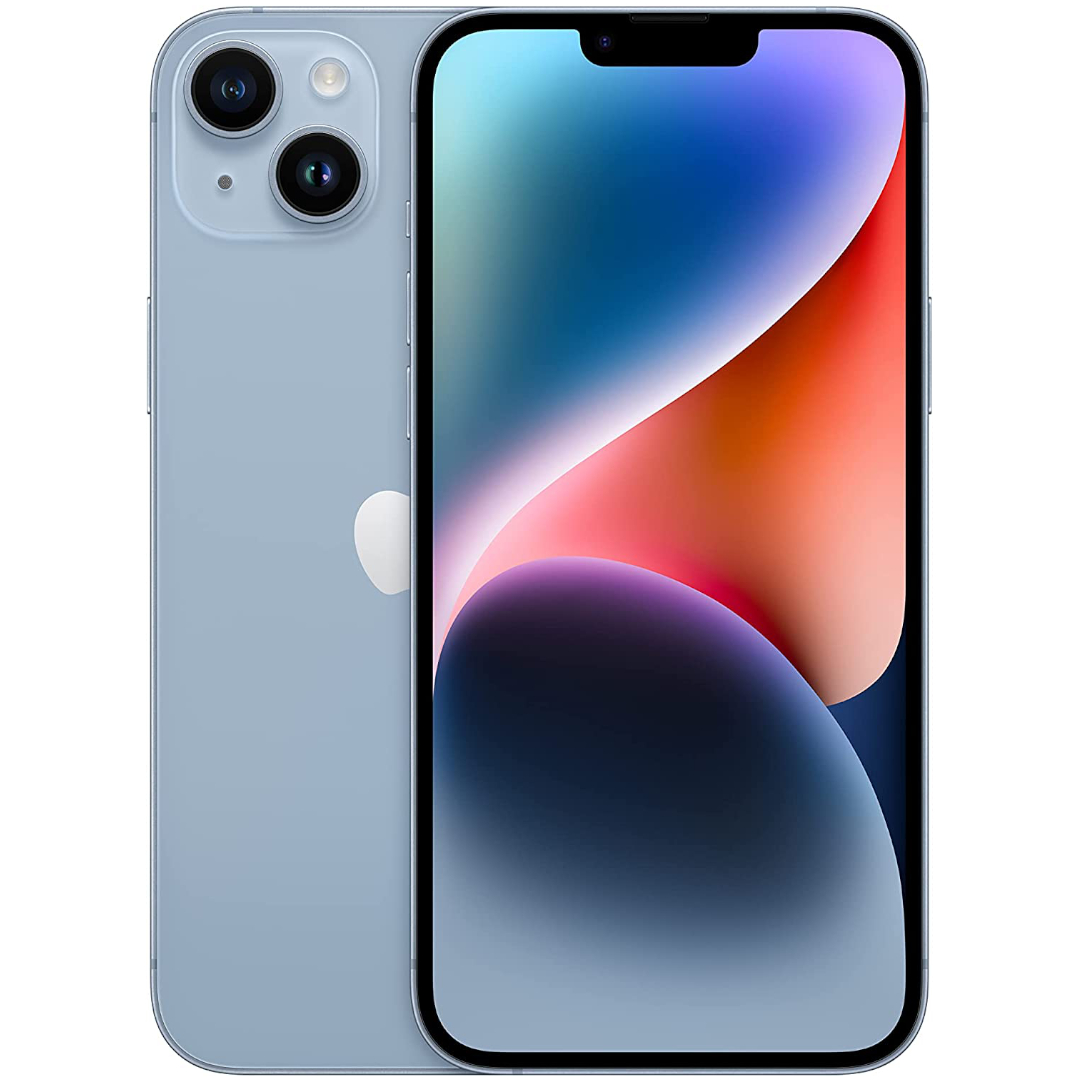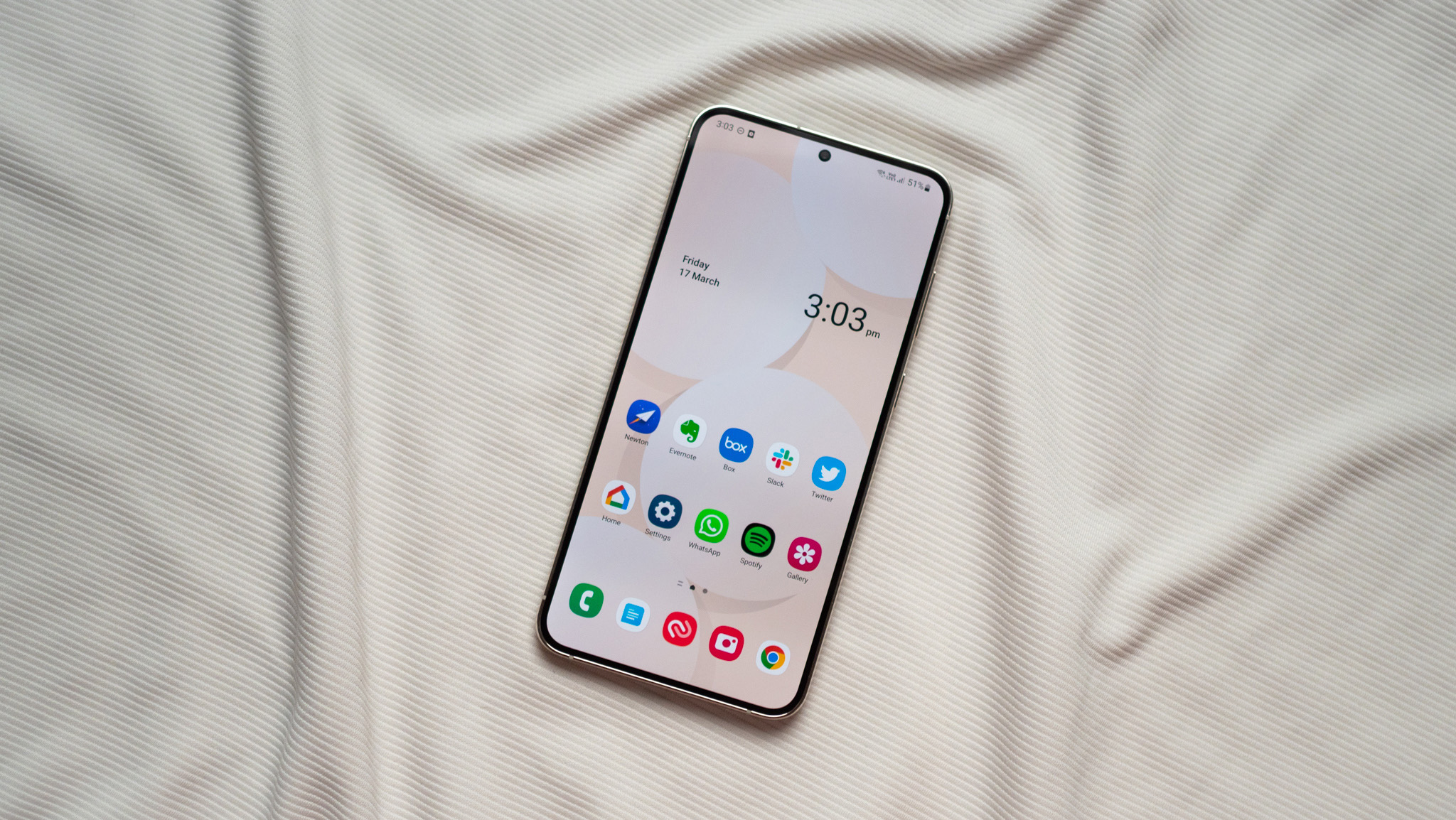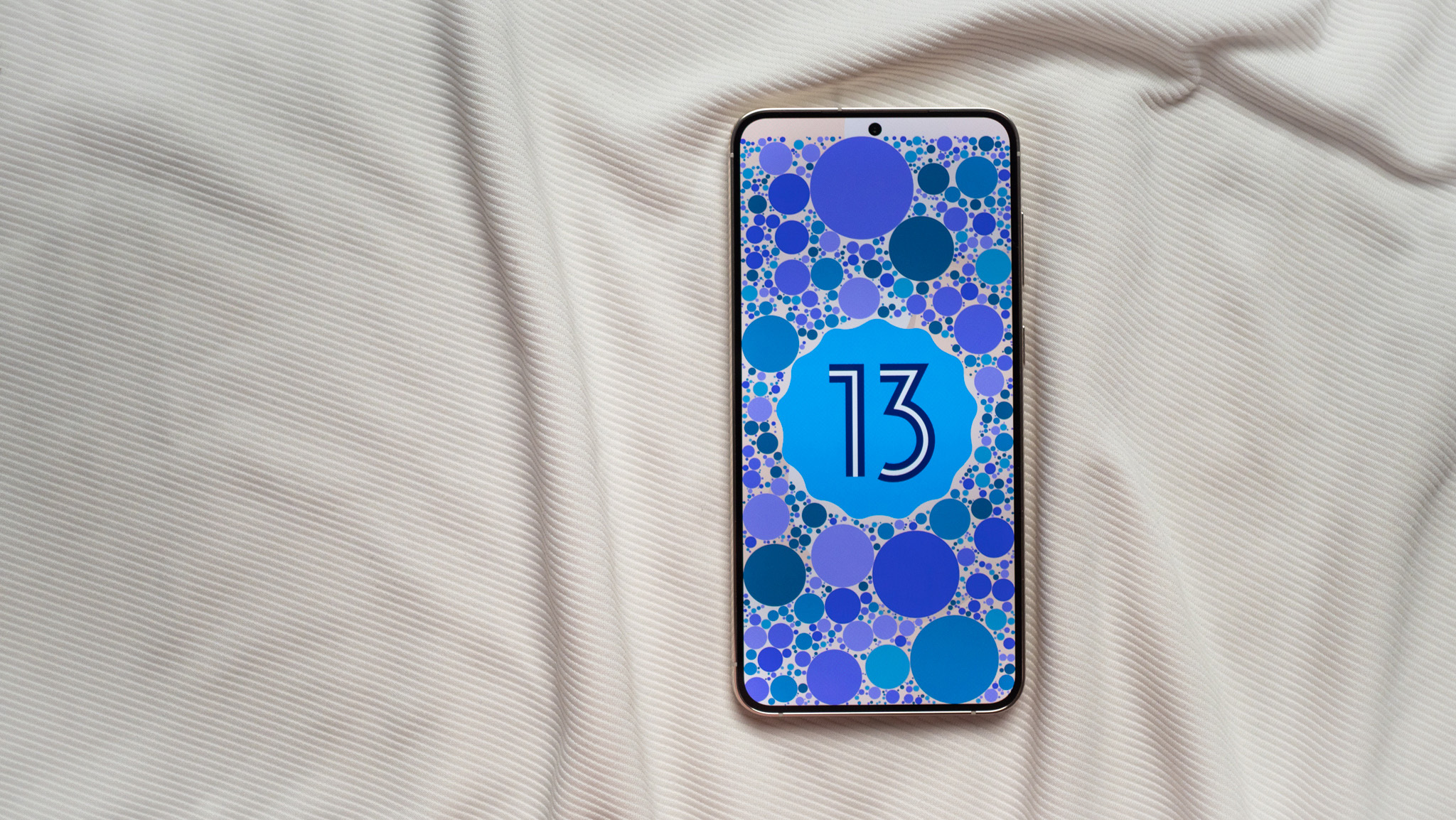Samsung Galaxy S23 Plus vs. iPhone 14 Plus: Which Plus-sized phone is best?
Both 256GB models cost the same, but Samsung's definition of "Plus" is a bit more advanced than Apple's.

Faster than ever
With a design that's not too different from an iPhone's, the Galaxy S23+ also has performance and battery life on par with what you'd get from an Apple phone. Add in a gorgeously bright and colorful display and four reliable cameras, and this phone is tough to beat.
Pros
- New Snapdragon closes the performance gap
- Comes with telephoto lens
- Packs more RAM, base storage
- Brighter 120Hz display
Cons
- More expensive
- Design is a bit boring
- Only FHD display

A big last-gen phone
Apple tried to get away with selling a reskinned iPhone 13 with a larger display, and consumers largely weren't fooled. While it's still a fast and attractive phone, it feels like it lost a step and allowed the Galaxy series to gain important ground. That being said, it does have a few advantages.
Pros
- More pixel-rich display
- Longer software support
- Last-gen Bionic chip still very fast
- Better colors
Cons
- The notch, still
- Only a 60Hz display
- Only two 12MP cameras
The iPhone 14 Plus pretty notoriously fell short of Apple's sales expectations, as most users appeared to be uninterested in a jumbo-sized iPhone 14 compared to the revamped iPhone 14 Pro. The Samsung Galaxy S23+ is also a second-tier phone in terms of performance and cameras, falling short of the Galaxy S23 Ultra.
So buying either phone is about finding the right compromise to hit a lower price point. But when you compare the Galaxy S23+ vs. the iPhone 14 Plus, only the former (in our view) hits the right balance.
Samsung Galaxy S23 Plus vs. iPhone 14 Plus: Design and display

Ever since the Galaxy S22 series, Samsung has redesigned its S phones to look remarkably close to the classic iPhone look, complete with the flat glass back and flat, angular edges. The Galaxy S22+ first applied this design, and it returns with the Galaxy S23+.
As our review says, "Samsung nailed the dimensions of the S23+, and you get a large screen without sacrificing usability." It's a large screen, but it's still comfortable to hold.
Apple hasn't changed its design language much in the last few generations, and the iPhone 14 Plus is no exception. 2mm wider and 0.2mm thicker than the S23+, with the same wide and flat edges, the iPhone 14 Plus is going to be slightly more uncomfortable to hold.
Both phones have a similar look, but diverge thanks to the cameras. Apple switched to its distinct triangular camera module look last generation and stuck with it here, while Samsung continues to employ its vertical-line look. Except this time, Samsung removed the aluminum camera housing around the sensors, leaving them naked for a more stark look.
The Samsung logo is also much smaller than the metal Apple logo, and its colors are more subdued and "professional" looking than the iPhone 14 Plus, which embraces a slightly more fun and colorful look with options like Purple, Blue, and (Product) Red.
Get the latest news from Android Central, your trusted companion in the world of Android
Outside of aesthetics, both phones have the standard IP68 resistance to water and dust. The iPhone 14 Plus uses Apple's standard Ceramic Shield protection and "aerospace-grade aluminum," while the Galaxy S23+ has Gorilla Glass Victus 2 and Armor Aluminum protection. Victus 2 is supposed to be the latest and greatest in fall protection, while we're uncertain if Ceramic Shield has progressed much since its iPhone 12 reveal.

Look at the displays, though, and the differences between the Galaxy S23+ and iPhone 14 Plus become much more distinct. For starters, the iPhone 14 Plus still has the same miniature notch as the iPhone 13 series, missing out on the more subtle Dynamic Island cutout on the iPhone 14 Pro.
Galaxy S23+ owners will happily accept the simple pinhole camera that takes up much less room on the display, given it also has facial recognition as an unlock option in addition to an in-display fingerprint sensor.
The one upside to the iPhone 14 Plus, aside from the extra 0.1 inches of display space, is that it has 65 more pixels per inch (PPI) than the S23+, falling in-between FHD and QHD resolution.
But Apple gave this fairly high-priced phone a 60Hz refresh rate, something we've only come to expect from mid-range phones at worst. You'll definitely notice more jittery scrolling and swipes than on the S23+, which uses a buttery 120Hz refresh rate that's particularly apparent when gaming.
You'll also enjoy a much brighter screen on the Galaxy S23+. Our parent company Future Labs measured both adaptive and HDR brightness on both phones and found the S23+ won for both (1012 vs. 764; 1345 vs. 1100).
The S23 Plus' sRGB and DCI-3 color gamuts sweep the table compared to Apple's; you'll enjoy richer color arrays for gaming and streaming, and our reviewer praised the "good customizability" for color management on Samsung's One UI 5 software.
Samsung Galaxy S23 Plus vs. iPhone 14 Plus: Performance and battery life
Apple's iPhone 14 and 14 Plus were its first mainstream phones to bring back the same chip as its previous generation — the Bionic A15 chip that powered the powerful iPhone 13 series. So while the iPhone 14 Pro gives you the best possible performance, the Plus is still an exceedingly fast phone.
What's surprising is after years of Android flagships lagging behind Apple phones, the Galaxy S23+ actually closes that gap. Future Labs bookmarked both phones extensively, and we're listing their close-fought battle below:
| Benchmark | Samsung Galaxy S23+ | Apple iPhone 14 Plus |
|---|---|---|
| Geekbench 5 (Single-Core) | 1524 | 1735 |
| Geekbench 5 (Multi-Core) | 4642 | 4473 |
| CrossMark (Overall) | 1352 | 1194 |
| 3DMark Wild Life Original Unlimited | 14509 | 11512 |
| 3DMark Wild Life Extreme Unlimited | 3730 | 2792 |
While benchmarks can only be trusted so far, you can generally see that thanks to the Snapdragon 8 Gen 2 and extra RAM, the Galaxy S23+ wins for overall performance, its CrossMark score barely beating what we measured in the iPhone 14 Pro with matching RAM (1328). As a gaming device or for demanding apps, the Galaxy S23+ appears to easily win the day.
Our S23+ review translates this to real-world use: you get "lag-free gaming even during extended sessions...a noticeable difference in fluidity versus last year, and there are no slowdowns whatsoever in daily use." Behind the Galaxy S23 Ultra, the S23+ is probably the second-fastest Android phone available today.
In fact, our reviewer notes that the 8 Gen 2 is "the closest Qualcomm has come to challenging the might of the A16 Bionic." And that's the key point here: the Galaxy S23+ vs. iPhone 14 Pro is a more competitive battle, for performance and most other metrics.
Still, you'd need the 256GB iPhone 14 Pro Max to match it for display size and storage, and that phone is priced $200 higher than the Galaxy S23+. The 256GB Plus costs the same as the S23+ (which starts at that storage size), so those are the two phones we're comparing here.
| Spec | Galaxy S23 Plus | iPhone 14 Plus |
|---|---|---|
| Chipset | Snapdragon 8 Gen 2 for Galaxy Devices | A15 Bionic |
| Display | Flat 6.6-inch AMOLED (Up to 1,750 nits) | 6.7-inch Super Retina XDR Display (Up to 1,200 nits) |
| Resolution | 2340 x 1080 (393ppi) | 2778 x 1284 (458ppi) |
| Refresh rate | 120Hz (48-120); 240Hz touch sampling | 60Hz |
| Memory | 8GB | 6GB |
| Storage | 256GB/512GB UFS 4.0 | 128GB/256GB/512GB NVMe |
| Main rear camera | 50MP (OIS), ƒ/1.8 | 12MP (OIS), ƒ/1.5 |
| Telephoto camera | 10MP (OIS), f2.4, 3x optical zoom | N/A |
| Ultra-wide angle camera | 12MP, ƒ/2.2 | 12MP Ultra Wide, ƒ/2.4 |
| Front Camera | 12MP, ƒ/2.2 | 12MP, ƒ/1.9 |
| Battery | 4,800mAh, 45W USB-C Fast Charging, 15W Wireless Charging, 5W reverse wireless charging | 4,323mAh, 20W Lightning wired charging, 15W wireless charging, 7.5W reverse wireless charging |
| Updates | Up to Android 17 (four updates), security through early 2028 | Up to iOS 21 or 22 (five or six updates); security through late 2028 |
| Security | Ultrasonic in-screen fingerprint sensor | Face ID |
| Connectivity | Wi-Fi 6E, sub-6 and mmWave 5G, UWB, NFC, Bluetooth 5.3 | Wi-Fi 6, sub-6 and mmWave 5G, NFC, Bluetooth 5.3 |
| Dimensions | 157.8 x 76.2 x 7.6 mm | 160.8 x 78.1 x 7.8 mm |
| Weight | 196 g | 203 g |
| Colors | Phantom Black, Cream, Violet, Green | Midnight, Purple, Starlight, (Product) Red, Blue |
| Protection | IP68, Gorilla Glass Victus 2 | IP68, Ceramic Shield |
Apple has always benefitted from NVMe storage, giving you faster read/write speeds than the UFS 3.1 standard could. Now Samsung has upgraded to UFS 4.0 storage, which essentially doubles the read and write speeds compared to the last generation of phones. We don't have official Apple numbers for a straight comparison, but it's clear this Galaxy generation closed the performance gap in this area.
As for battery life, Future Labs stress-tested the Galaxy S23+ and iPhone 14 Plus' longevity, measuring 11:24 and 11:57, respectively. Neither is the best battery score we've ever seen, but that screen time is more than enough to last you through the day. In general, we found that the Galaxy S23+ can withstand "heavy use" to easily last a full day.
Apple's Pro series is notoriously battery-deficient, but the 60Hz Plus is much more efficient. Similarly, the Galaxy S23+ lasted about 90 minutes longer than the S22+, which tended to overheat with heavy use, and has created a more reliably long-lived device.
As for charging, Samsung unquestionably wins on this front with 45W USB-C charging over Apple's 20W Lightning charging. In practice, the Galaxy S23+ will refill about 25% more of its battery in 30 minutes than the iPhone 14 Plus. Both phones offer 15W wireless charging, and many prefer MagSafe charging to Qi charging. But only Samsung offers reverse wireless charging for your other devices.
Apple always gives its phones at least five OS updates and long-lasting security updates, and that hasn't changed. But the Galaxy S23+ will get four OS updates and five security updates, meaning you're getting much better value for your purchase than you did with Android phones of the past.
Samsung Galaxy S23 Plus vs. iPhone 14 Plus: Cameras

The Galaxy S23+ has the same cameras as the S22+, but Samsung used software upgrades to push the same hardware to deliver better results. Not everyone likes "Samsung's signature contrast look," but our reviewer found it is "toned down versus previous generations, and you get photos that are much more accurate" with improved dynamic range and detail.
The telephoto lens produces great-quality daytime shots at up to 3X optical zoom. Since the iPhone 14 Plus doesn't have a telephoto lens, Samsung buyers get the edge here.
That also applies to the selfie camera. Improved across the S23 lineup, the new 12MP front camera has excellent resolution and uses AI object recognition to sharpen your facial features or background details. For comparison, when our iMore colleagues reviewed the iPhone 14 — which has the same cameras as the Plus — they weren't happy with the detail quality in their selfies.
They did praise the iPhone 14 Plus for the quality of low-light shots, brighter and more detailed daytime shots, and high-quality Cinematic Mode video, while criticizing the detail quality in selfies.
Samsung Galaxy S23 Plus vs. iPhone 14 Plus: Which should you buy?

With most of these comparisons, we end with the valid point that Apple and Android phones are a bit like apples and oranges. If you prefer one ecosystem or the other, both options are valid; that certainly applies when you compare the iPhone 14 Pro vs. Galaxy S23 Ultra, two fantastic and top-tier devices.
With this comparison, it's actually much more clear-cut than usual. Apple usually holds a substantial lead for performance, battery life, and software updates, but the S23+ either wins or falls very close behind in each area.
The Plus is arguably a more attractive phone from the back, but it's tough to get past the notch, Lightning port, and 60Hz refresh rate in 2023 — making the phone feel dated right out of the box. That's why so many Apple fans upgraded to the Pro.
The Galaxy S23+ misses out on the next-gen cameras and higher resolution of the Ultra, but otherwise, it still feels like a "current-gen" device that doesn't hold much back. It's an all-around performer and belongs in the conversation of the best Android phones of 2023.

Choose the Galaxy S23+ for the best unblemished visual experience, fastest multi-core performance, and (arguably) better cameras. Avoid the S23+ if you want a one-handed phone or the best-possible Samsung experience.

Choose the iPhone 14 Plus if the 14 is too small, the iPhone 14 Pro Max is too expensive, and you want a fast and long-lasting device. Don't choose it for Apple's latest display, processor, or camera tech.

Michael is Android Central's resident expert on wearables and fitness. Before joining Android Central, he freelanced for years at Techradar, Wareable, Windows Central, and Digital Trends. Channeling his love of running, he established himself as an expert on fitness watches, testing and reviewing models from Garmin, Fitbit, Samsung, Apple, COROS, Polar, Amazfit, Suunto, and more.
